Fyfe is an abstract tile-placement game for 2-5 players by new designer Kosch. Players will decide how and where they want to score on their boards throughout the game. Players will place down tokens as efficiently as possible to score the most points. The game was published in 2022 by Pegasus Spiele (Framework) , and they were kind enough to send me a copy to check out with my family!
What’s in the Box?
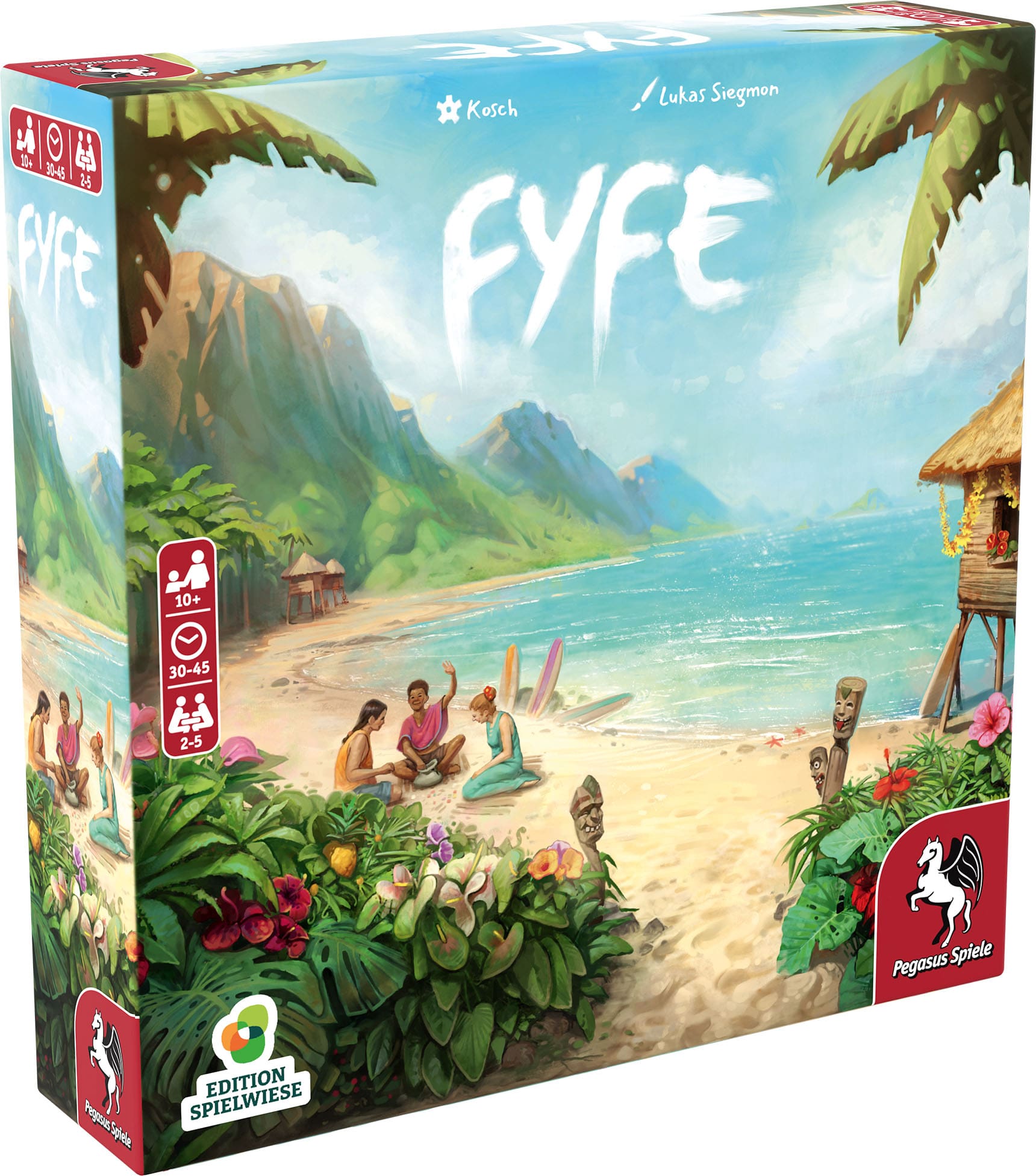
- 125 wooden tokens
- 5 wooden lucky charm tokens
- 10 joker tiles
- 20 5-point bonus tiles
- 15 FIRST bonus tiles
- 1 bag
- 5 player boards
- 5 groups of 7 lucky charm tiles
- 5 groups of 15 scoring boards
- 1 rulebook
The components are fantastic. The tokens are wooden. The player boards are made out of nice thick cardboard with double layered boards. They really made the game look really nice with quality components that will last.
How’s it Play?
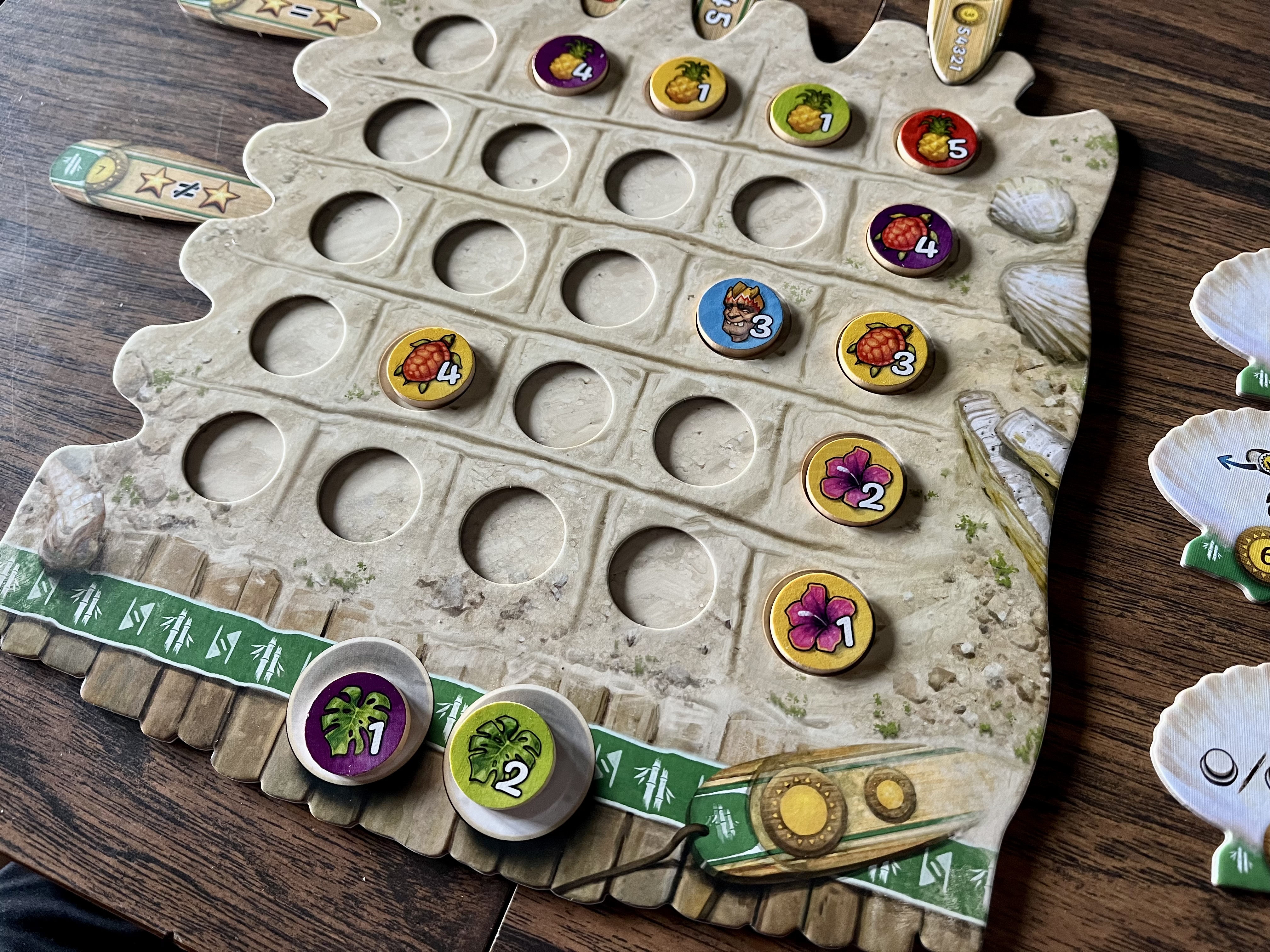
Each player has their own player board, and the aim is to fill in your player board with tokens and scoring boards to give you the most amount of points. After 25 rounds, the player with the most points wins the game.
There are 125 tokens in Fyfe, each slightly different from one to another. They vary in color, number, and or symbol. But there is only one blue 1 pineapple token, but there is a blue 2 pineapple token, as well as a green 1 pineapple token, or a blue 1 turtle token.
Players will start the game by pulling out 2 random tokens from the bag to place on their player board in the player’s supply area. Then for the remaining turns in the game minus the last round, players will be choosing a token from the 2 in their supply to place on their board and then pulling out one token from the bag each round.
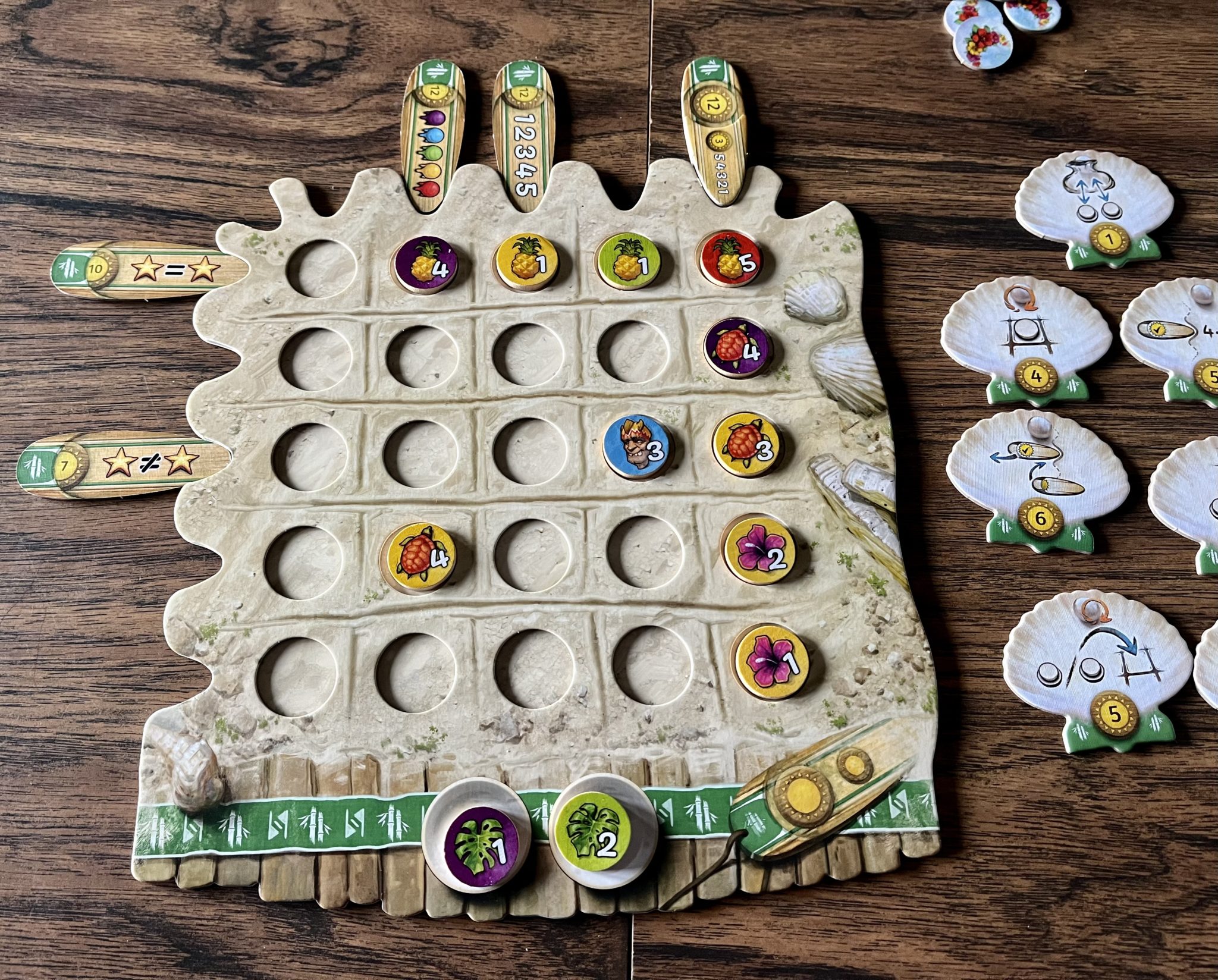
When placing a token on your board, you can place it in any open spot anywhere on your board. The other token in your supply will stay there.
But when you place a token, you will check to see if there is any scoring board that is already pointing at the token you just added. At the beginning of the game there won’t be because you haven’t placed any. So, whenever there is no scoring board point towards your newly placed piece, you will need to place a scoring board point toward it. This can be a scoring board that points horizontal, vertical, or in some places diagonal.
The scoring boards all have different ways you can score points. You place them initially with the points indicator cut off. When completing the row and fulfilling the scoring board’s condition, you will flip it over and score the points. If you are the first player to finish this scoring board first, you will also take the FIRST! Bonus tile, which is worth an extra 3 points.
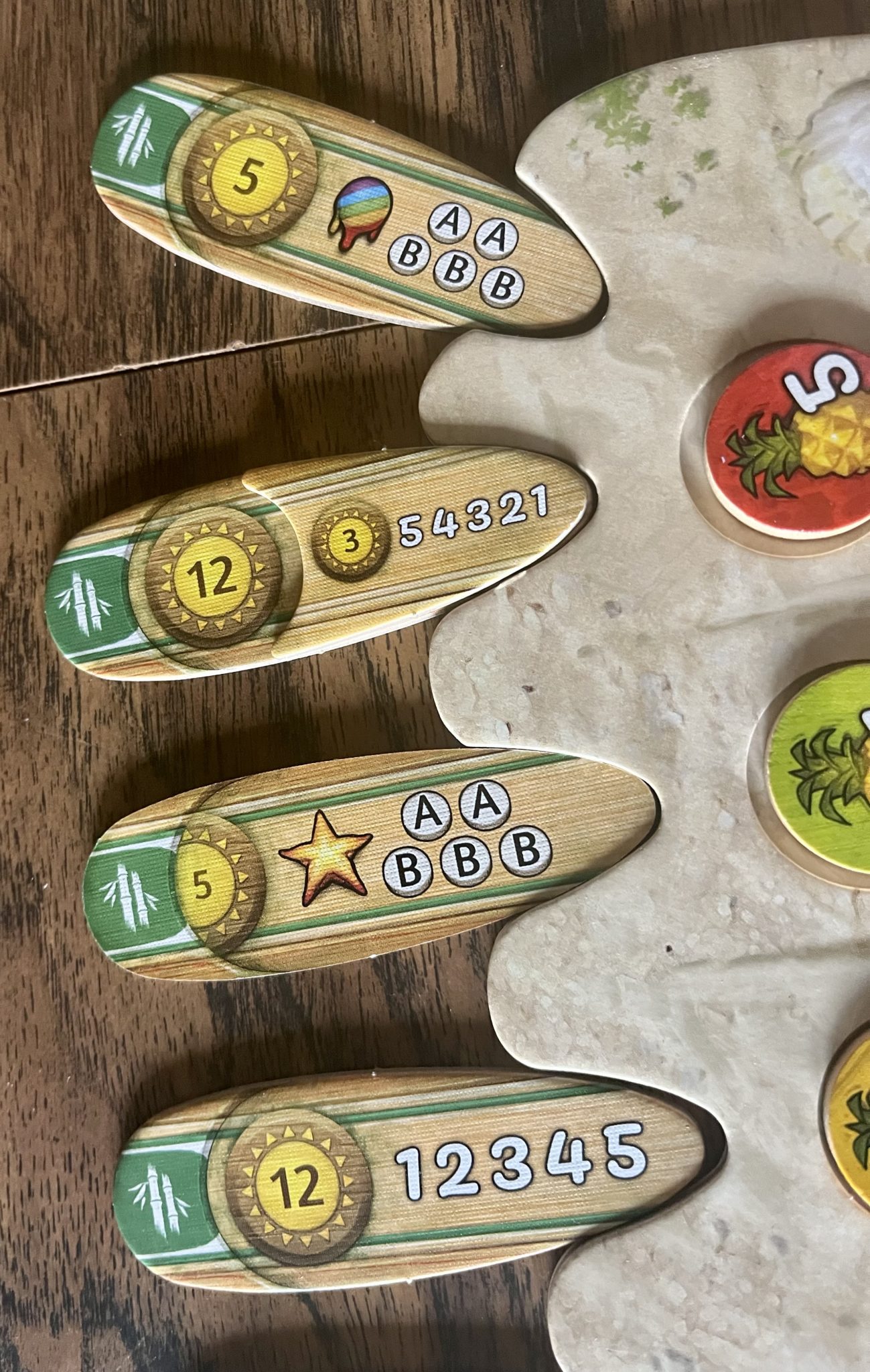
If a player draws a token from the bag and it shows a lucky charm. Then that player will draw another token, and every player can activate one of their lucky charm tiles by flipping it over and taking its action. Actions will help reposition tokens so you can fulfill the scoring boards more easier. You can choose not to activate a lucky charm as they will score you points if not used at the end of the game.
If you place a token down on your board that completes 2 of your scoring boards, you gain 5 extra points, if you complete 3 scoring boards at the same time, you gain 10 extra points, and if you complete 4 when placing a token, most likely the middle one, you will gain 20 extra points.
Eventually you will place all your scoring boards out as you place out tokens on your board. On the 25th turn, the last turn, players won’t draw token from the bag but instead will place their last token they have in their personal supply. Points are calculated up from completed scoring boards that have been flipped over, plus any FIRST! bonus tokens gained during play. The player with the most points, wins the game.
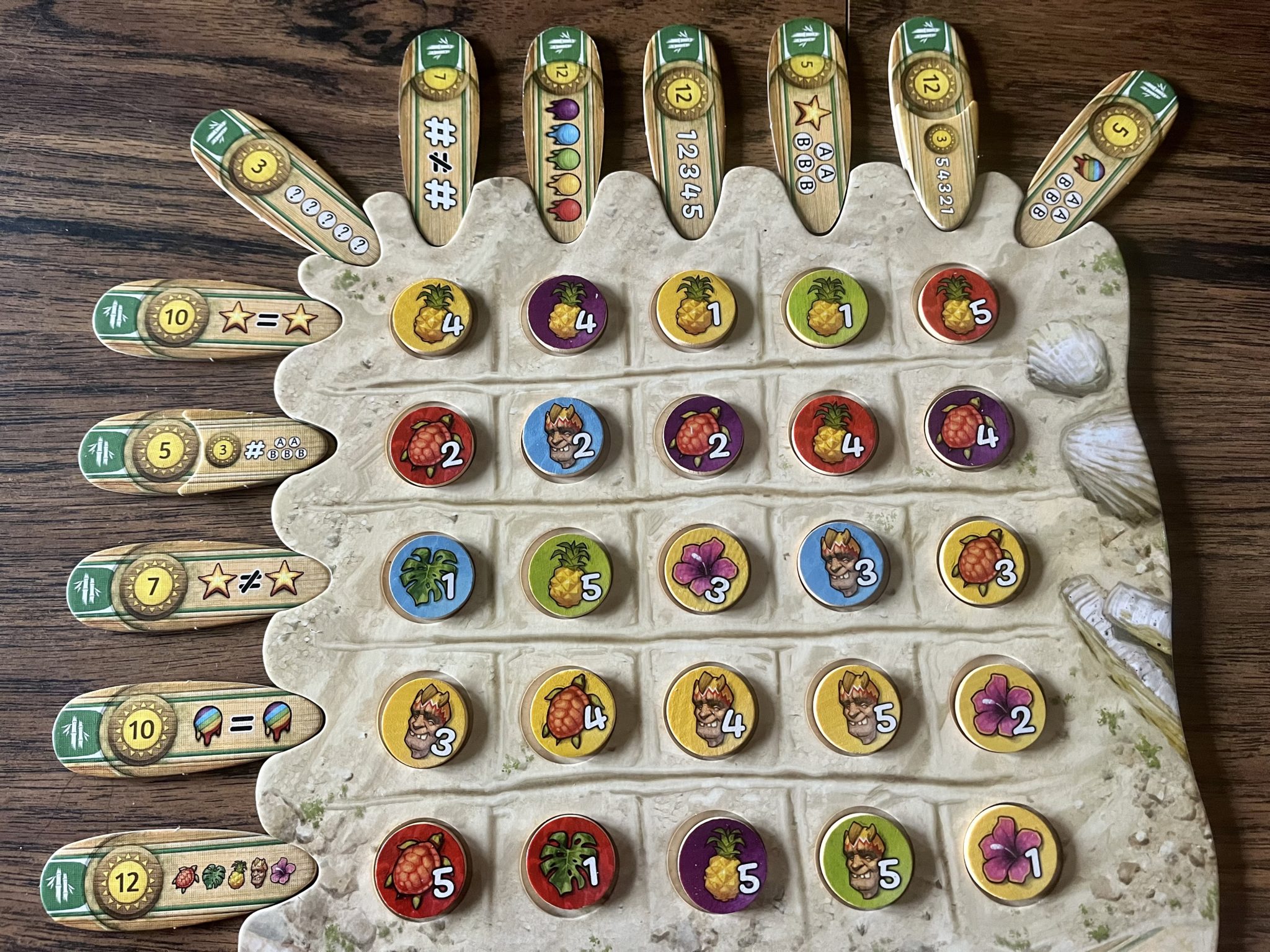
The Verdict
Fyfe is a great, but advancedb family game. The rules are simple and easy to understand, but the strategy when playing the game is layered and hard to cruise through without changing your plans and taking other options.
You will find yourself with plans for several rows and columns after placing scoring tiles, but you will draw tokens that don’t belong in those, so you will start plans on new rows and columns. And soon, depending on the tokens you draw, you might find that you have plans for several scoring boards, and you have to try to keep them straight. The last thing you want to do is place a token down mistakenly that doesn’t work for a scoring board. You don’t want to to all the work to just accidentally place a token wrong to not score any of the points.
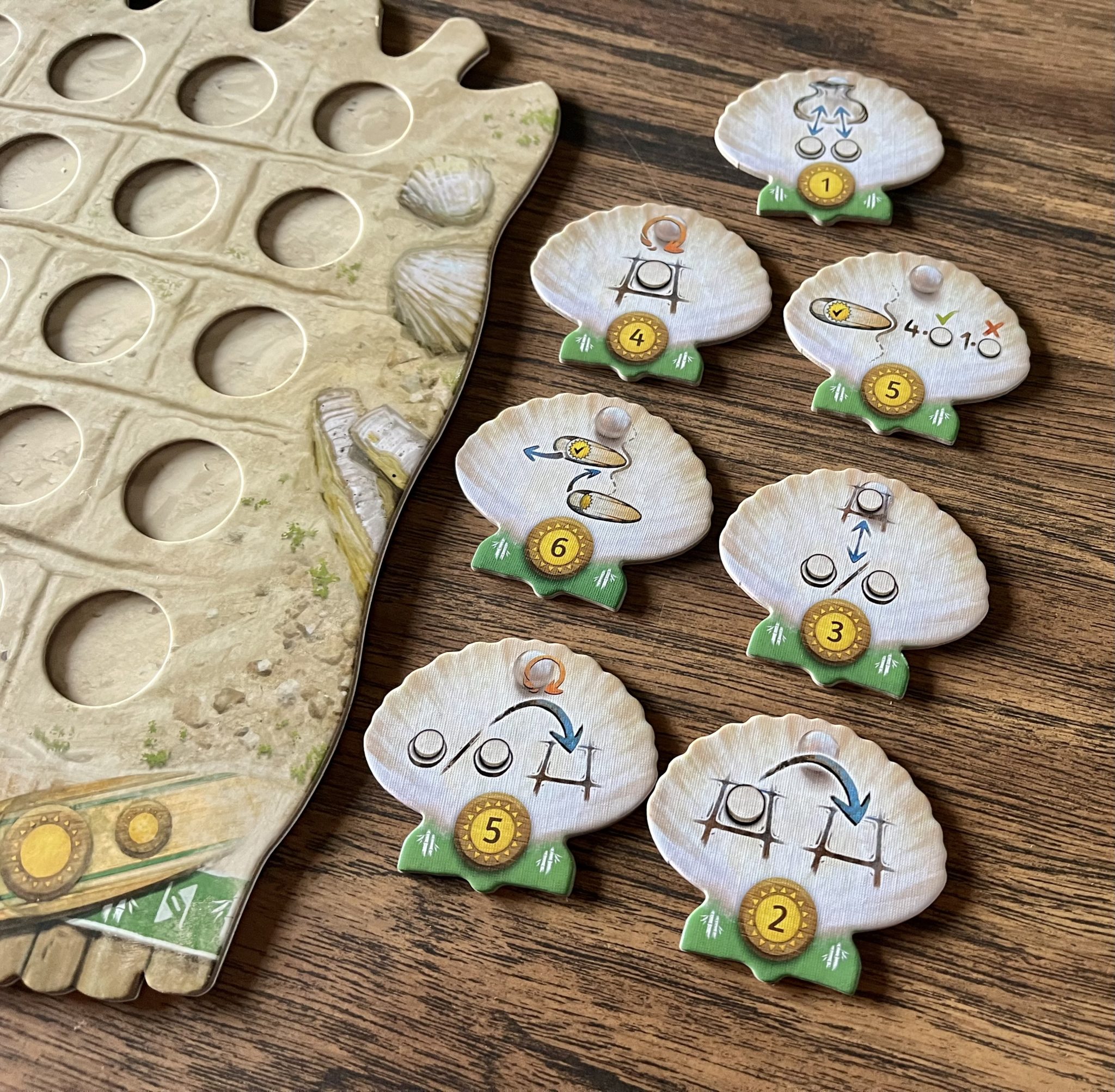
The strategy also isn’t just dealing with so many scoring boards all at the same time, but the placement of those boards will really help set you up for success or failure. You know some of the scoring boards want a certain order of numbers or icons or colors, so starting these without needing to place the scoring board yet will help so that if you need to change later, you are still flexible enough to do so.
On the flip-side, at times you might have plans for certain rows and columns, so at any time you can place a scoring board. This can help so you know exactly what the plan is for that row or column, and you don’t forget what you were working on.
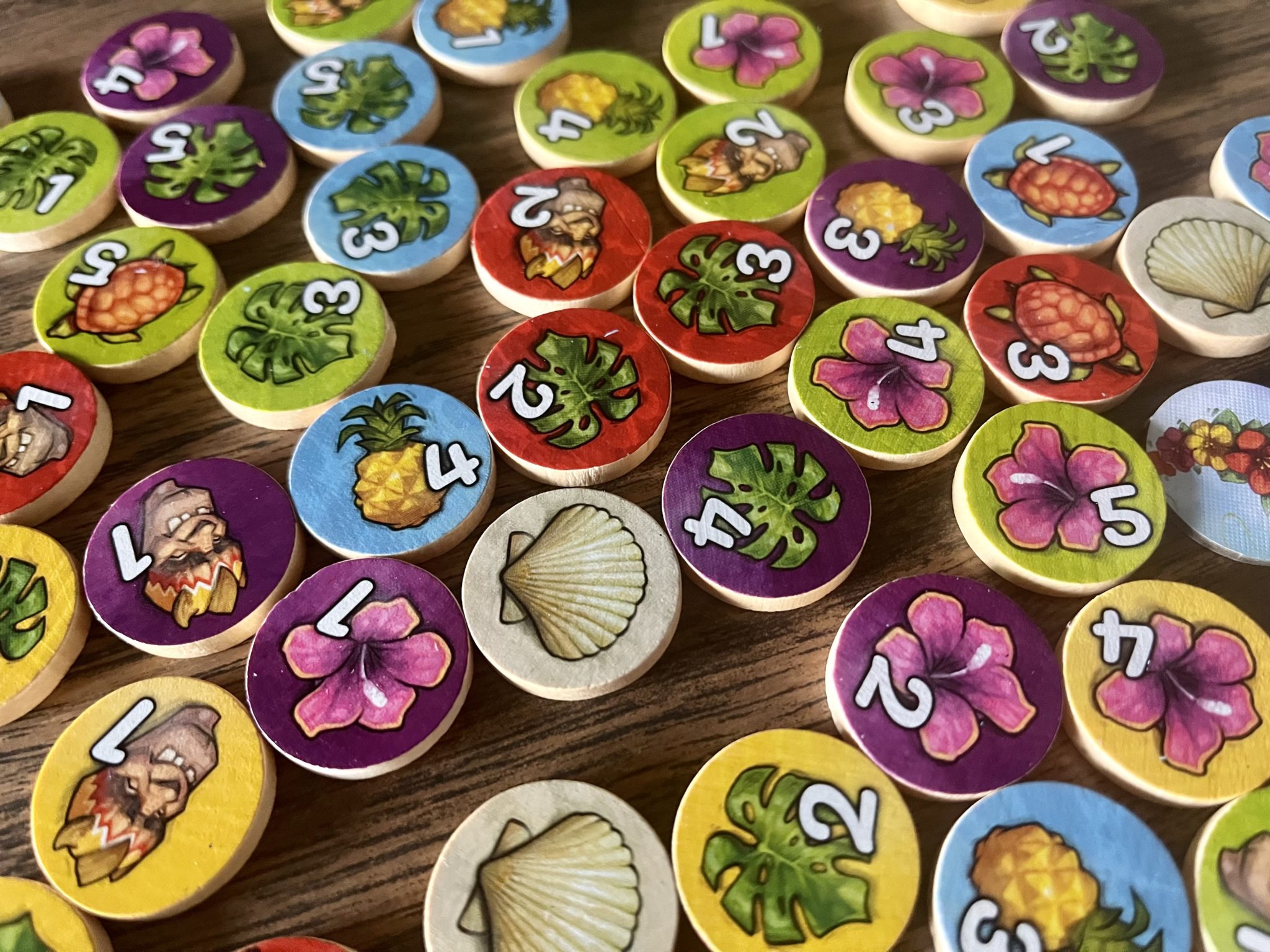
There is so much thinking in this game, because in addition to all the other things I’ve mentioned, the patterns and goals have to cross over with each other and not all them can do that. It’s up to you to position them in places where they can blend well with each other. If you are doing a row with 1,2,3,4,5, and then a column with the same numbers, make sure you don’t also place a scoring board that will contradict those goals nearby.
Fyfe was a little too much for my kids, who usually do fine with most family weight games. Since patterns cross over into other patterns, it made it hard for them to think of those the patterns, as they kept focusing on just one. For this reason, I feel like this isn’t quite a medium weight game, but it is more of a family game with an advanced weight to it. There is more planning and thinking needed in this game than what you might think. But the kids still liked it, and since they are learning patterns in school, the game really got their attention and they loved the idea of it. But because it requires so much planning and attention to several things, that’s the main thing that I like in the game. The goal is known at the beginning of the game, and its up to you to puzzle the tokens you draw to fill in your board, and score the most scoring tiles.
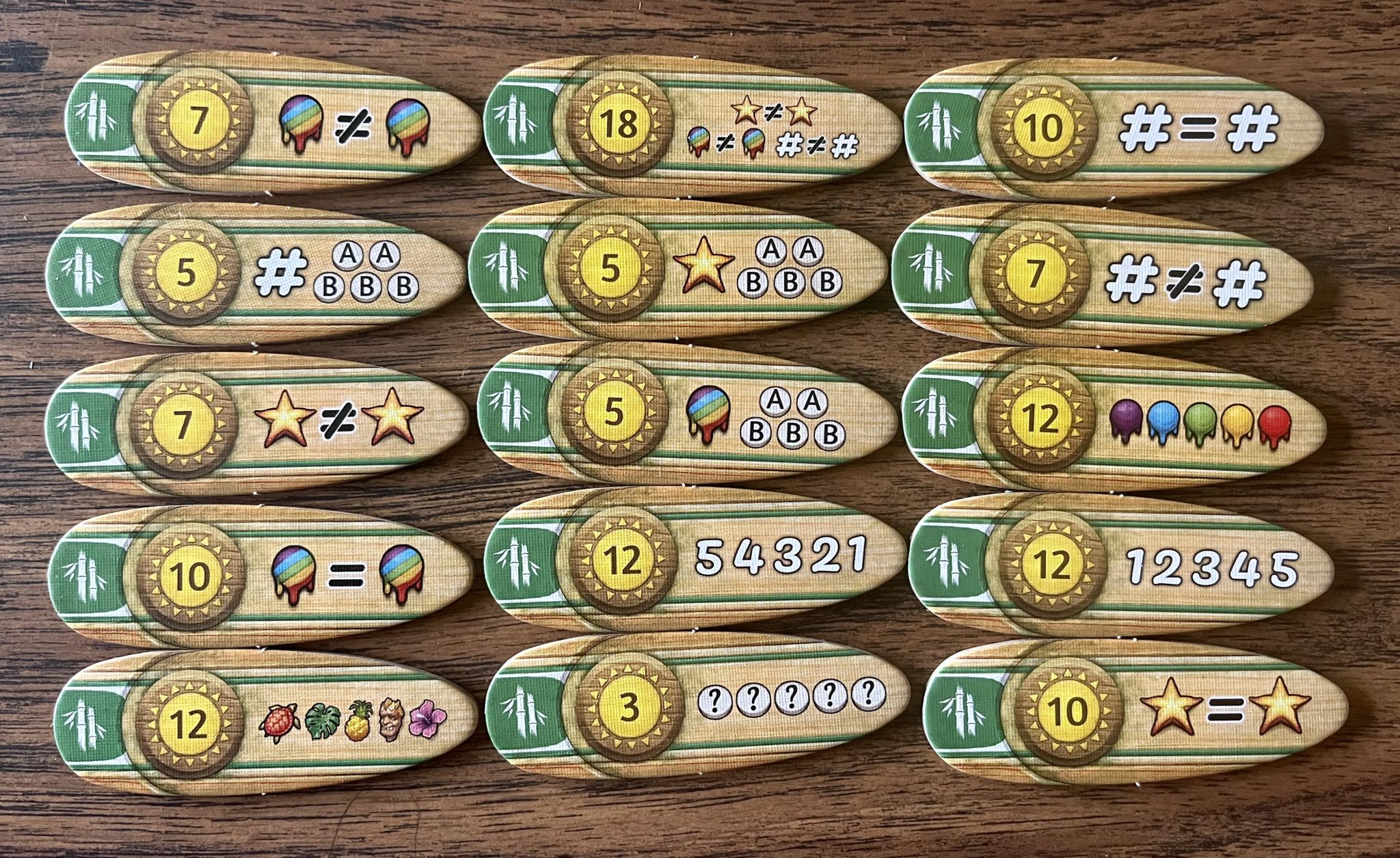
The scores tend to me close to each other, as all players have the chance to score the same points. But choices like completing certain scoring boards before other will give you those small bonuses, which can all add up to be a substantial part of your score. As well, planning to complete multiple scoring tiles at the same time can also give you those points to pull out a win.
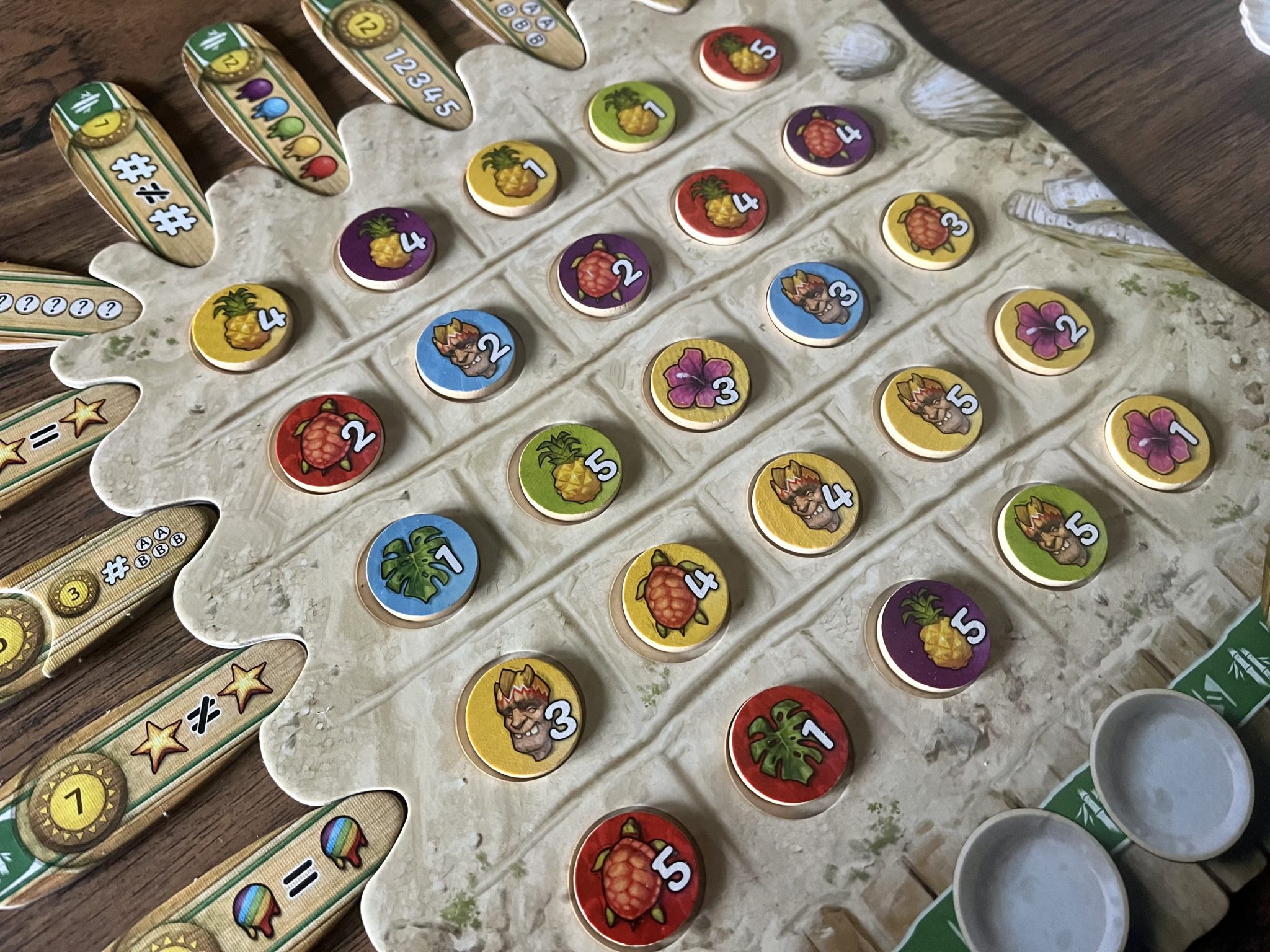
Overall Fyfe is a game I personally thought was great, it was too difficult for my kids to play along with me. But it will be a game I pull out to play with them in a couple years when they can manage multiple tasks at the same time. I will be pulling it out in the mean time with local gamers or other adults when at game night.
You can order it now from the Pegasus Spiele shop or your FLGS, where it’ll run you about $40.00.
Images via Pegasus Spiele
Have strong thoughts about this piece you need to share? Or maybe there’s something else on your mind you’re wanting to talk about with fellow Fandomentals? Head on over to our Community server to join in the conversation!

